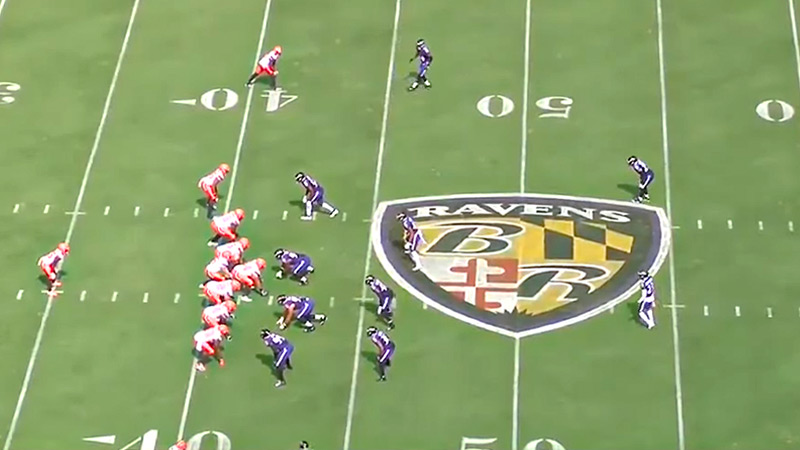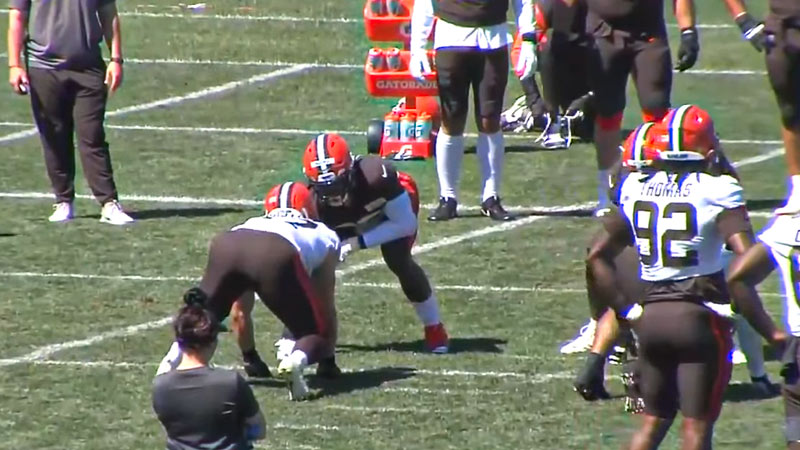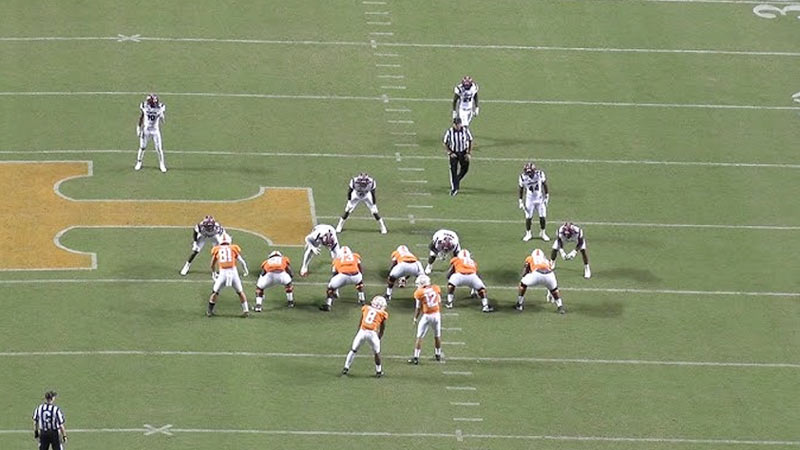In the intricate game of American football, where every play is a chess move and strategy reigns supreme, few offensive maneuvers are as captivating and high-stakes as the football seam route.
This tactical play has the power to unravel defenses, create heart-stopping moments, and turn the tide of a game. In this comprehensive guide, we delve deep into the world of football seam routes, uncovering its nuances, benefits, and potential pitfalls.
Whether you’re a die-hard fan, a budding athlete, or a curious observer, prepare to unlock the secrets behind one of the most intriguing plays in the playbook.
What Is a Football Seam Routes?
A football seam route is a strategic pass route employed in American football, particularly effective against zone defenses. The receiver executing a seam route runs along the boundary of a defender’s coverage area, typically positioned between a linebacker and safety.
This exploits the “seam” or gap between multiple defensive coverages. The aim is to create a mismatch or confusion within the defense, forcing defenders to decide which player to cover quickly. By exploiting the seam, the offense aims to create a passing lane for the quarterback to deliver an accurate throw to the receiver.
This route demands precise timing and coordination between the quarterback and receiver. The seam route’s success hinges on exploiting defensive vulnerabilities and capitalizing on the seams in the coverage scheme to gain substantial yardage or even score a touchdown.
Components of Football Seam Routes
Football seam routes consist of several key components that work together to create a successful play:
Receiver Alignment
The receiver lines up on one side of the formation, often on the outside edge of the offensive line or in the slot, to prepare for the route.
Initial Release
The receiver uses a burst of speed off the line of scrimmage to quickly get past any press coverage from the defender in front of them. This initial release is crucial for gaining separation from the defender.
Reading the Defense
As the receiver accelerates downfield, they read the defense to identify the optimal seam or gap between defenders where they can exploit the coverage.
Timing
Proper coordination with the quarterback is essential. The receiver must time their route to match the quarterback’s dropback and release of the ball.
Seam Break
Near the point where the seam route should be targeted, the receiver makes a sharp cut toward the middle of the field. This cut is designed to create separation from defenders and position the receiver in the open area of the coverage.
Quarterback Progression
The quarterback reads the defense and progresses through their options. The seam route is often a mid-range or deep option, so the quarterback needs enough time in the pocket to allow the play to develop.
Pass Delivery
The quarterback delivers a well-timed and accurate throw to the receiver as they continue to run along the seam. The pass needs to be placed where only the receiver can make the catch, ideally leading them away from coverage.
Yards After Catch
If the receiver successfully catches the ball, they aim to gain additional yardage after the catch by using their speed, agility, and vision to evade pursuing defenders.
Blocking
In some cases, other offensive players may be involved in blocking to provide additional protection for the quarterback or to help create space for the receiver along the seam.
Defensive Reaction
The success of the seam route also depends on how the defense reacts. If executed well, the route can force defensive players to make quick decisions and potentially leave gaps in coverage.
By combining these components, a football team can effectively execute a seam route to exploit the gaps in a zone defense and create opportunities for big gains or touchdowns.
Strategies of Football Seam Routes

Executing successful football seam routes requires a combination of strategies to outmaneuver the defense and create optimal passing opportunities. Here are some key strategies for effectively utilizing seam routes in your offensive playbook:
Formation and Alignment
Begin by aligning the receivers in formations that create favorable matchups and exploit defensive weaknesses. Utilize different personnel groupings and receiver positions (outside, slot) to keep the defense guessing.
Pre-Snap Reads
Quarterbacks and receivers must assess the defensive alignment before the snap. Identify potential coverage gaps, matchups, and areas of vulnerability in the defense to determine the best seam route option.
Timing and Rhythm
Develop a strong sense of timing and rhythm between the quarterback and receiver. Properly coordinate the snap count, dropback, and route execution to ensure the receiver hits the seam at the right moment.
Route Variations and Play Action
Incorporate variations of the seam route to keep the defense off-balance. Use double seam concepts with multiple receivers running seam routes to stretch the defense vertically and horizontally.
Use play-action fakes to freeze linebackers and safeties, creating larger windows for the quarterback to target the seam route. A successful play action can hold defenders in place, allowing the receiver to exploit the seam more effectively.
Motion and Shifts
Incorporate pre-snap motion or shifts to manipulate the defense’s coverage responsibilities. Motioning a receiver across the formation can force defenders to adjust and potentially create coverage mismatches.
Combination Routes
Pair the seam route with complementary routes that can exploit the defense’s reactions. Crossing routes, deep posts, and wheel routes can draw defenders away from the seam, opening up opportunities for big plays.
Route Depth and Angle
Teach receivers to vary their route depth and angles based on the defensive alignment. Adjusting the depth of the route can help find the open area in the seam and make it more challenging for defenders to cover.
Quarterback Progression
Train quarterbacks to progress through their reads, starting with the seam route but having alternative options if the defense covers it effectively. A well-timed check-down or secondary target can keep the drive alive.
Film Study
Analyze opponent tendencies and defensive coverages through film study. Identify when and how the defense tends to cover seam routes and adjust your strategy accordingly.
Adjustments and Practice and Repetition
Have contingency plans in place for different defensive reactions. If the defense adjusts to take away the seam, be prepared to exploit other areas of the field.
Consistent practice and repetition are essential. Both quarterbacks and receivers need to develop chemistry and a deep understanding of each other’s movements to execute seam routes effectively.
By implementing these strategies and tailoring them to your team’s strengths and opponents, you can maximize the effectiveness of football seam routes and create game-changing opportunities in the passing game.
Benefits of Football Seam Routes

Football seam routes offer several benefits to an offensive playbook, providing strategic advantages that can lead to successful plays and increased scoring opportunities:
Vertical Stretching
Seam routes create a deep threat down the middle of the field, forcing safeties and linebackers to cover a significant distance.
This vertical stretching of the defense opens up other areas of the field, creating one-on-one matchups on the outside and potentially isolating receivers against defenders.
Zone Coverage Exploitation
Seam routes are especially effective against zone defenses. By running between zones, the receiver can find open pockets of space where the defense is vulnerable.
This can lead to chunk plays and first downs as the receiver settles into the uncovered area.
Mismatch Creation
Skilled receivers running seam routes can exploit mismatches against slower linebackers or smaller defensive backs.
This puts the offense in a favorable position to capitalize on a size or speed advantage, resulting in potential big gains.
Play Action Enhancement
Seam routes work well in conjunction with play-action plays. When executed effectively, play-action freezes linebackers and safeties, creating larger windows for the quarterback to target the seam route without the threat of immediate coverage.
Safety Manipulation
Seam routes force safeties to make quick decisions about which receiver to cover, potentially leading to miscommunications or hesitations in the secondary.
This can result in blown coverages and opportunities for explosive plays.
Middle of the Field Emphasis
Seam routes emphasize the middle of the field, an area often referred to as the “soft spot” of many defensive coverages. Successfully targeting the seam can help move the chains and sustain drives by exploiting this vulnerable part of the defense.
Incorporating well-executed seam routes into an offensive strategy provides a versatile weapon that challenges defenses, exploits weaknesses, and creates opportunities for big plays, ultimately contributing to an effective and dynamic passing game.
Drawbacks of Football Seam Routes
While football seam routes offer several benefits, they also come with certain drawbacks and potential challenges that teams need to consider:
High Risk, High Reward
Seam routes involve sending a receiver deep into the heart of the defense, which can lead to interceptions or incomplete passes if not executed perfectly.
The tight window between defenders increases the risk of turnovers if the quarterback’s throw is inaccurate or the timing is off.
Quarterback Pressure
Executing a successful seam route often requires the quarterback to have sufficient time in the pocket to read the defense and deliver an accurate throw.
If the offensive line struggles with pass protection, the quarterback may not have the necessary time to target the seam effectively.
Physicality and Contact
Receivers running seam routes are susceptible to hard hits from defenders, particularly when crossing through the middle of the field.
This can lead to potential injuries or dropped passes if the receiver is unable to maintain focus amidst the contact.
Defensive Adjustments
Defenses can adjust to seam routes by assigning multiple defenders to cover the middle of the field, effectively neutralizing the threat.
Linebackers and safeties can work together to bracket the receiver, making it challenging to find open space.
Read and Recognition Complexity
Both the quarterback and receiver need a deep understanding of defensive coverages and how to exploit them.
Recognizing the proper seam and adjusting routes based on defensive reactions requires a high level of football IQ and may take time to develop.
While football seam routes can be potent weapons, teams must carefully weigh the potential drawbacks and challenges to effectively integrate them into their offensive strategy.
FAQs
What is a football seam route, and how does it work?
A football seam route is a pass route used primarily against zone defenses. The receiver runs along the boundary between two defenders’ coverage areas, exploiting the gap or “seam” in the defense.
This route aims to create mismatches, confuse defenders, and provide a strategic passing option for the quarterback.
When is the ideal situation to employ a seam route?
Seam routes are particularly effective in situations where the defense is playing zone coverage, and there is a gap between defenders, such as between linebackers and safeties.
They are often used on medium to long passing plays when the offense aims to stretch the defense vertically.
What are the key components of a successful seam route play?
A successful seam route play involves receiver alignment, reading the defense, precise timing, proper route execution, quarterback progression, and the ability to gain yards after the catch.
Coordinated efforts between the quarterback and receiver are crucial to its success.
How do seam routes interact with other offensive strategies?
Seam routes can complement other routes and concepts within an offensive playbook. They can be paired with play-action fakes, crossing routes, and deep posts to manipulate the defense and create opportunities for explosive plays.
What challenges and risks come with using seam routes?
Seam routes carry the risk of interceptions if the timing or accuracy of the throw is off. Quarterback pressure, physicality from defenders, defensive adjustments, and the complexity of reading coverages can also pose challenges to executing successful seam routes.
Wrapping Up
As we’ve unraveled the intricacies of football seam routes, it becomes evident that this play is more than just a route on a playbook—it’s a dynamic, strategic dance that involves reading the field, exploiting weaknesses, and seizing opportunities.
Whether you’re a coach fine-tuning your playbook or a fan dissecting game-day plays, understanding the art of the seam route adds an extra layer of appreciation to the beautiful game of football.
With the right combination of precision, timing, and execution, the seam route can be the catalyst for game-changing moments that live on in the annals of football history.
Best wishes.







